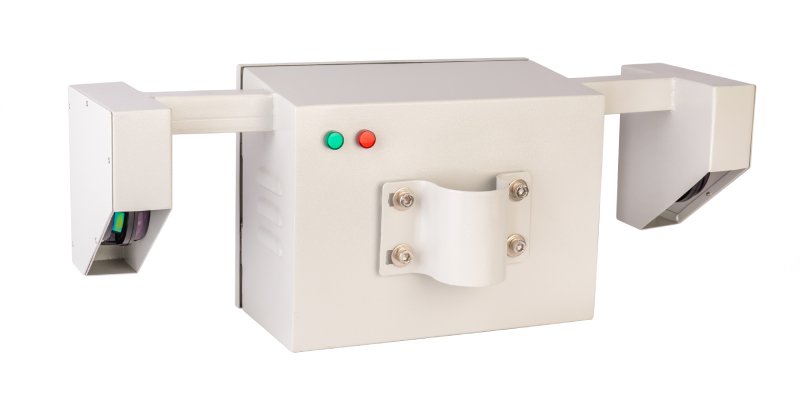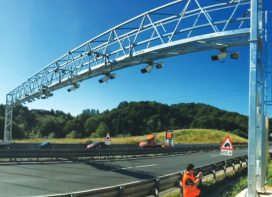
Sandeep Pawar, Managing Director of Kent ITS
Astutely answering TrafficInfraTech’s questions, Sandeep Pawar, Managing Director of Kent ITS, discusses Kent ITS’ journey as a System Integrator, Fastag’s contribution to the mobility segment, and the potential impact of GPS-based tolling on Indian roads.
Being in the business of Toll operation for the past 25 years, Kent ITS has expanded both in terms of volume of service offerings and new solutions…
At the time Kent ITS was founded in 1999, the technology for tolling and Intelligent Transportation Systems was limited. Back then, automation was limited to only printing receipts and collecting payments.
Since its formation, Kent has always been committed to indigenising its solution from a hardware and software perspective. After starting out with a software development team, we eventually developed, designed, and manufactured our own hardware. Therefore, we had complete control over the support requirements for this field. Since this field is operational 365 days a year, 24X7, there is no downtime for maintenance, so assistance becomes essential. Our team has always sought to indigenize the hardware.
Around 2010-2011, I visited Japan and European nations to see how technology was being implemented. I could introduce these technologies into our system and deliver high-quality solutions on the project we were awarded in 2012.
The outcome our toll collection software Toll Xplore which detects and records every single transaction that takes place at a toll booth. It is capable of working with Weigh in Motion System & Dedicated and Mixed mode ETC System.
Another user-friendly solution is the development of Park Well – Parking Management System which is a mix of manual parking and RFID- based intelligent parking system. The fully automatic Parking System use specialized hardware equipment like Smart Card, Barrier, UFD, and MD etc.

How has the market for mobility solutions evolved in India?
The mobility segment needs to implement various automations from the road, to revenue collection, to video incident detection, and many other areas. In short, this segment has evolved tremendously in last four years. Fastag, for example, is a prime example of how automation has transformed mobility. With FASTag implementation made mandatory across the country, revenue collection has doubled. As part of our collaboration with Equitas Bank, we were the first company to introduce parking through FASTag at Mumbai-Pune Truck Terminus in 2021.
Parking is a segment where we have a lot of innovative solutions. As an example, Slot Management was implemented in one of Pune’s manufacturing units, where 5000 vehicles were under transition in SAP but physically, it was hard to get them there. We developed this device which had a camera, RFID reader and Ethernet built in. It was wireless, and each vehicle had an RFID tag, so we eliminated the need for networking for this infrastructure housing these 5000 vehicles. Every parking slot had a camera, so spotting a particular vehicle was easy.
What is the role of system integrators in today’s ITS market in India? What has been your experience as a system integrator?
Fastag was introduced in 2016, however, it was not fool-proof system. The pandemic then stagnated in 2020, the system remained dormant for a year. In February 2021, the government took an initiative to make Fastag mandatory. The earlier collection at the national highways, which was around Rs 65Cr before 2016, is now around Rs 130-135Cr per day. As per the MoRTH-NHAI-IHMCL report, the Fastag penetration is around 95%, so we can say, we are successful in implementing the ETC system on national highways.
We are not sure, how we would contribute to the introduction of GPS as a System Integrator. Enforcement is going to be a challenge; even with Fastag and cash-based systems, System Integrators handle enforcement.
With GPS-based toll collection, it will be a booth-less structure, with gantries and mobile vehicles monitoring invalid vehicle tags. Instead of sending data from 29 states to one data center for the complete highway network, other countries have decentralized the data. Data can be collected & validated by state-based aggregators, then sent to a central application for processing. Namibia has adopted this model, so there are different possibilities. In India, enforcement will be the biggest challenge because of the lack of standardised number plates, lack of integrated KYC, and lack of linking bank accounts to vehicles. Right now, we are dependent on the back-end connectivity of the acquirer bank. And without connectivity, the collection stops or gets delayed. Until enforcement is in place, system integrators can offer value in this area.
Kent has invented the method of separating the vehicles and read the Tag before the payment axis. This invention was with the help of an equipment called TL_Booster. Kent did a Paid POC which was paid by IHMCL; and the first implementation was on Rajiv Gandhi Sea Link in Mumbai.
In this lanes all Valid FasTag vehicles pass without stopping and only those vehicles which does not have proper balance in the FasTag account or do not have FasTag are stopped. Rest of the times the Barrier is kept Open.
The through put of the TL_Booster lanes have increased to triple efficiency.
In addition to the Rajiv Gandhi Sea Link, the second installation is at Khalapur along the Mumbai-Pune Expressway. At Khalapur, out of the 20 lanes, 12 lanes are free-flow i.e., valid Fastag vehicles pass from this lane without Stop.
We are also in the process of installing them at Manesar Toll Plaza in Gurgaon.
How do you foresee India setting priorities while making progress in future mobility?
As the NHAI and other governing bodies understood that the earlier technology had certain limitations on highways, the revised circular gives a number of options for better implementation of the latest technologies on Indian roads. However, I feel that once this system & technology are implemented, they have to be used properly. Technology is prevalent in foreign countries through control rooms and video walls, tasks are defined, and the overall system is well documented. When an emergency arises, you will get assistance on the road within minutes without contacting the call centre.
In my opinion, this is the future of mobility in India, and we are not far from it.
 TrafficInfraTech Magazine Linking People Places & Progress
TrafficInfraTech Magazine Linking People Places & Progress


